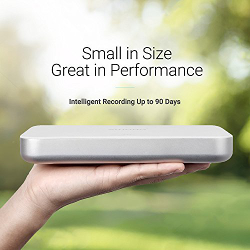Wireless Outdoor Security Cameras
How Does a Wireless Camera Work?
What is WiFi really?
Outdoors and Electronics
Wireless Outdoor Security Cameras
Wireless Must Have Features
Wireless 4 Channel Systems
Wireless 8 Channel Systems
Wireless 16 Channel Systems
Wireless Outdoor Security Cameras-
It was once a requirement to have cables and wiring for cameras, and DVR head units in order to put a fully functional security system into your home. As the technology age keeps a rollin’, we now have wireless printers, wireless computers, wireless outdoor security cameras, wireless refrigerators, well, almost wireless everything.
To date, the most consumer friendly applications of wireless communications for home use Wi-Fi signals and the IEEE 80x.xxx family of protocols . When coupled with home security, WiFi can blossom into unreal possibilities that just years ago seemed out-of-reach expensive. Such as WiFi HD cameras. Imagine easily mounting security cameras outside the house where you want. You don’t need long cables from one end of the home to the other, and the received video is as clear and sharp as any recent Hollywood movie’s quality. Under eves, over porches, even mounted to the backyard shed (provided there is a power supply for the required 12V DC if it is not a battery operated unit). More on that below. The absence of cables simplifies just about everything. It takes the “subway system” out of the home security equation and leaves a happy result.
To achieve wireless cameras and recording, there can be a main unit that can record over the local network and capture this video signal coming from at times, multiple cameras. Maybe a NVR? The invention of the NVR or Network Video Recorder has begun to lead the pack as far as home security devices are concerned. They offer great advantages over the more common DVR or Digital Video Recorder because they use the added intelligence of the IEEE 80x.xxx protocols to seamlessly blend with other home network peripherals. But you don’t always need an NVR as we will see.
NVRs will have a built-in number of channels it can record and playback simultaneously. They sometimes use different arrangements of resolution vs. recording, or resolution vs. playback as the NVR has at times limits to how much data can flow. Of course a more robust and higher end unit can easily deal with those demands better than a lower cost unit can. Individual channels available can range from 1 to 64 and more, depending on how large your needs are. For a small three bedroom house of approximately 1500 square feet, a system containing up to 4 individual channels would be plenty for good area coverage and easy installation. When a home is above 2200 sq. ft., 8 channels or more would prove useful. Of course, it all depends on your specific needs. Maybe just a single camera at the front door is all you really want. Cool, go with that.
The cameras used in wireless security systems come in a wide range of resolutions and come in either an enclosed dome chassis or a bullet style chassis. Complete kits usually have a pre-selected arrangement of one or the other, or even both styles. Camera colors are not generally an option with multi-channel systems.
Stand alone IP cameras offer simple setup and there’s virtually no installation of any kind other than plugging in the power supply. To access the cameras feed, they will use either an app based GUI (graphical User Interface), or they may just use a website based configuration. You probably don’t want the entire world to see your cameras feed. A username and password is the common way to filter allowed users and non-users. This is why there are usually a security wall from an app or website.
How Wireless Cameras Work-
How is it Wireless?

In 1997, the first IEEE 802.11 wireless protocol was released to the world. The Institute of Electrical and Electronics Engineers put together a localized network standard that allowed computers to communicate back and forth by radio waves and they wanted to have the rest of the world incorporate this “language” into wireless commercial electronics.
This protocol is more a means of the “type” of data structure for wireless data, and not so much the method of “how” the wireless mojo works. The devices and routers that can handle this protocol see it as information pertaining to the control of various ports and various functionality found with in that particular system or device. Think of it as the paint-by-numbers art we all know. The protocol is the number/color key, and not the actual image. The image is determined by the device on the network and what it is built to do. The actual Wi-Fi, which is what most commercial home security cameras use, is simply radio waves like the FM signal your familiar with. But there’s more to it.
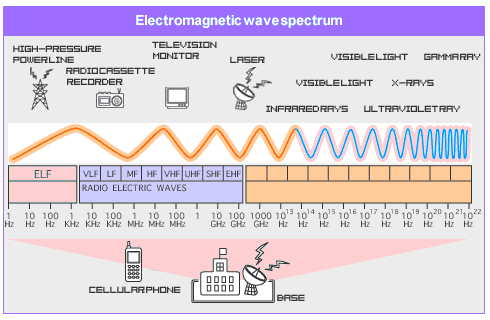 Two frequencies occupy the Wi-Fi in your home and depending on the router it can use both 2.4GHz and 5GHz as a carrier for all the good stuff it transfers such as video, audio, and data media. Now security cameras that are wireless will generally use the slower 2.4GHz because it can travel farther then the higher 5GHz can. This gives added signal strength and distance for better practicality to your home system.
Two frequencies occupy the Wi-Fi in your home and depending on the router it can use both 2.4GHz and 5GHz as a carrier for all the good stuff it transfers such as video, audio, and data media. Now security cameras that are wireless will generally use the slower 2.4GHz because it can travel farther then the higher 5GHz can. This gives added signal strength and distance for better practicality to your home system.
Wireless outdoor security cameras send out their signals at the speed above heard sound so the limitations really come from the network bit rate, service provider, and obstructions to the signal. NVRs can now come with dual network interfaces at a speed up to 1000Mps. This is a resource that large video resolutions can benefit from. Cameras taking 720P, 1080P, 1080N and now more so the impressive 4K UHD, transmit millions of pixels at wildly fast speeds so a recorder needs to keep up. Having a fast service provider will make things work much smoother. Think of the early days of video online. Not very impressive for the time it took to load completely. Obstructions such as physical objects, walls, weather, and distance can all affect the signal from a camera. So care in these regards should be understood.
The Outdoors and Electronics
Water, temperature swings from hot to cold, and sun rays cooking and working their toll on objects left outside are all concerns for your precious electronic cameras. They do such great work providing high quality video that it would be a shame to have them breakdown and quit. That is why there are measures in place to out-do mother nature and win the elements battle for mankind yet again.  These standard are call the I.P. standards.
These standard are call the I.P. standards.
Are you done giggling? The IP stands for “Ingress Protection” or International Protection ratings and it’s all to do with the ability of an enclosure to withstand different situations outside such as dust, pressured spraying water, and submersion in water. The higher the rating the better.
Many, if not most outdoor security cameras are built to the specs of IP65 and IP66. Is this good or bad? Well, this is a two digit identifier, as the first digit is the solid dust and particulate rating, and the second digit is the liquid resistance side of the scale. So for example, the “IP65” is a 6 = Solid particles resistance, and the 5 = Liquid resistance for that devices enclosure. It does not rate the electronic components, but only the chassis housing surrounding them.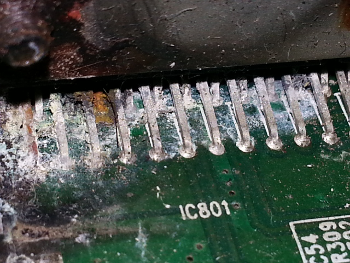
As with most things, time can zap the life out of things and materials. Rubber becomes brittle and chassis metal may grow rust as the finish has been defected. Condensation can collect and grow corrosion on circuits with current flow exposed, such as IC leads. All these things can lead to complete failure, and over many years new equipment is needed to keep the security system active and running smoothly. Everyone has to travel that path once in a while.
Wireless Outdoor Security Cameras-
Home security systems with Wi-Fi cameras and NVR recorders has never been this good in terms of quality and prices. High definition video with Terabytes of storage can easily be had for under $300 and below are some examples of those.
Wireless Security and Must Have Features
Top features to put on the wish list are not so much bells and whistle doodles, I’m checking if anyone is reading still, but features that make it worth the investment. There is the law of diminishing returns that states at some price point the quality and value in the product does not reflect the added cost. Think of a recliner chair. You can get one for say $200 that will be nice cozy. Now let’s spend $10,000 on a relining chair. Some where between the 200 and 10,000 is a price where the extra cozyness DOES NOT equal the extra cost of the more expensive chair. Some people will prefer the more expensive and that’s fine. But for most of us the is a diminished return for the additional cost. Security systems are just as susceptible the this law as anything.
Top Features You Will Want-
- Wireless Cameras- That phrase alone make installation sound effortless. Wireless security cameras are gaining in popularity and have just as good signal quality and resolutions as their wired siblings. It’s why you read this page isn’t it?
- Storage Capacity- Having a high resolution camera means more data which means more Hard Drive space is needed (Not so when using cloud storage).
- A Good Low Cost App- The app for your phone is at times the most used method for viewing and controlling your camera system. When you are home it’s not much of a concern and you may go about your daily routine, but when you are away it is a much more important factor. Some apps come with a free subscription, some come with a cost after the trial period, and still others are third-party apps that can have little to no cost and are compatible with many brands of security cameras. It may take some review reading to know what is a quality app verses one that is a weak operator. So do your homework once you narrow down all your choices.
- HD Resolution- In prior years, home security systems would incorporate analog TVL (Television Lines) cameras. These resolutions are a quanity of pixel lines. So a 1280TVL camera would take video at about 1,280 horizontal pixel lines. So is this HD? No, the frame size is based around the older 4:3 ration, and HD resolutions use a 16:9 wide screen frame size. But the industry does relate the two. For example, below is an A-Zone system that uses 720P HD cameras and they relate it to a 1,280TVL. So in the land of home security, most things can be cross reffereneced and work arounds to accomidate older equipment with newer equipment is common also.
Optional:
- Two Way-Talk- This is a slick feature, and it is built-in to many newer camera models, but many find it a bit impersonal, and don’t always use this feature after getting used to the system. For anyone who doesn’t feel comfortable answering the door this may be a really great thing to have. It’s all up to your needs.
Cloud Based Systems
Zmodo makes a five camera system that is based on the cloud and doesn’t rely on a NVR for recording and playback. These cameras are wireless and need the CamCLoud App to control it all via your computer or smartphone.  The IP cameras connect to the 2.4GHz side of your home Wi-Fi and can send back stunning 720P resolution video. Incredible 80ft of night vision and wide angle lenses also. If not using a NVR is something that sounds nice this may be the system for you.
The IP cameras connect to the 2.4GHz side of your home Wi-Fi and can send back stunning 720P resolution video. Incredible 80ft of night vision and wide angle lenses also. If not using a NVR is something that sounds nice this may be the system for you.
IP Indoor Cameras
There really doesn’t have to be a camera at all. As mentioned before, anything can and has been done in the market of home security. Take for instance a wireless outdoor security camera, er, light. This is a camera that looks like a light bulb. It has 360 degrees of panaramic viewing with 720P resolution. 
4 Channel
Here is a 4 channel Lorex LW2301 system with an expandable platform. This home security system is a great simple solution without lots of cameras and work. It c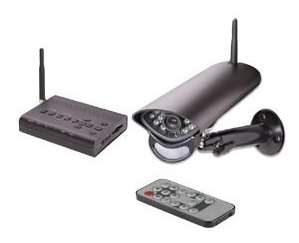 omes with one indoor/outdoor camera and has an easy set up compared to most wireless systems.
omes with one indoor/outdoor camera and has an easy set up compared to most wireless systems.
4 channel security systems like this A-Zone home system provides easy installation and plenty of viewing coverage for an average sized home. A-ZONE 4 channel Full 960P NVR with four 1.0 Megapixels HD Real-Time Wireless Security Cameras. This All-in-One Four Channel NVR Kit uses 4 Outdoor 960P NVR Cameras to connect to your home network in just minutes. There is no need for video cables any longer which makes for a much cleaner and more pleasing installation. As with most NVR systems, using an app on your smartphone will give you 24/7 access to all your camera feeds. These cameras from A-Zone can deliver 80ft of night vision with the built-in 1280*720P Image Sensors. 80 feet is one of the longest ranges we have seen in recent years.
This All-in-One Four Channel NVR Kit uses 4 Outdoor 960P NVR Cameras to connect to your home network in just minutes. There is no need for video cables any longer which makes for a much cleaner and more pleasing installation. As with most NVR systems, using an app on your smartphone will give you 24/7 access to all your camera feeds. These cameras from A-Zone can deliver 80ft of night vision with the built-in 1280*720P Image Sensors. 80 feet is one of the longest ranges we have seen in recent years.
This system has multiple alerts which are all customization as to how and when they are sent and received. If a camera is not detected it will alert you and also common functions such as motion detection will pop up an alert according to your settings.
The four cameras are 720P HD cameras and that is equivalant to 1,280TVLs.
System Features:
- 4 Channel 720P Video Wireless/IP Security Camera System/ 4 x 720p (1280TVL) 1.0MP Cameras
- VGA & HDMI Output / Backup to External Storage via USB.
- Transmission distance: Open space 100 is meter, room with walls is 30 meter –
- Enhanced wireless module, more stable signal transmission –
- SSID technology-Auto code-matching realizes convenient real P2P application
- Motion detection
- Email alerts
- Multiple simultaneous viewing by Web browser or Smartphone
- Reserved Ethernet ports for wired IP Camera connection.
Included with this System:
- 1 x 4-Channel 130 Million NVR + 2TB HDD
- 4 x IP Cameras
- 1 x USB mouse
- 1 x 1M network cable(for IP camera code match)
- 1 x DC 12V/2A power adapter(for NVR)
- 4 x DC 12V/1A power adapter(for IP camera)
- 1 x Screw bag(for HDD)
- 4 x Screw bag(for IP camera)
- 1 x CD User Manual + Quick Start Guide
For more NVR’s for home use including channels ranging from 4 -32 visit our Best NVR for Home page.
8 Channels
When you step up to an 8 channel camera system you can view nearly every part of your property, inside and outside. Here is a Zmodo wireless camera system and it comes with 4 outdoor wireless cameras for your home or business. 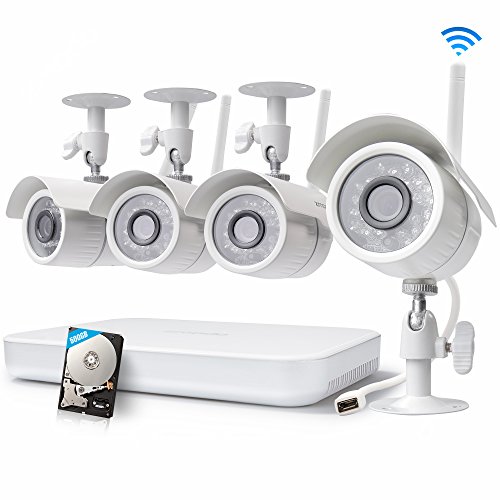 Setup is downloading the free Zmodo App, creating an account, and connect the cameras to your Wi-Fi. Once setup, you can remotely view from anywhere with a smartphone, iPad or PC. Footage will record to the 500GB NVR, allowing you to save up to 90 days of footage from all four cameras. Enjoy peace of mind no matter where you are and be notified when something happens.
Setup is downloading the free Zmodo App, creating an account, and connect the cameras to your Wi-Fi. Once setup, you can remotely view from anywhere with a smartphone, iPad or PC. Footage will record to the 500GB NVR, allowing you to save up to 90 days of footage from all four cameras. Enjoy peace of mind no matter where you are and be notified when something happens.
Advantages
* Easy Setup – Connect the NVR and cameras within minutes using Zmodo app.
* Easy Remote Access – Enjoy peace of mind via your smartphone no matter where you are.
* Stay Connected – Be notified when something happens with intelligent mobile alerts.
System Features:
- IP video input: 8CH IP Camera Inputs
- Video Resolution: 720P HD
- Record Rate: 100fps
- Record Mode: Normal Recording / Intelligent Recording / Motion Activated Recording
- Playback: Fast forward / Rewind / Slow play / Digital Zoom
- HDMI Output: 1 Channel
- Smartphone systems: iOS 7 and up, Android 4.0 and up
- Connectivity: 2.4GHz WiFi (Note: please connect your phone to the 2.4Ghz network if your router provides both 2.4Ghz and 5Ghz network). Camera Feature
- Image Sensor: 720P Color Sensor
- Lens: 2.8 mm* Angle of view (diagonal): 81 degree
- Number of IR LEDs: 24 * Night Vision: up to 65ft (20m)
- Minimum Illumination: 0 Lux (IR On)
- Operating Temperature: 14°F~122°F
- Weatherproof: Yes
- Power:12V DC Package Includes
Included with this system:
- (1) 8CH Network Security NVR
- (1) 500GB Hard Drive Pre-installed in the NVR
- (4) 720p HD Wireless Outdoor Security Camera
- (4) 5V/1A Power Supply for Cameras
- (1) 12V/2A Power Supply for NVR
- (1) Ethernet Cable
- (1) Quick Guide
16 Channel
Now you’re getting into some seriously vast coverage area. Also if you don’t use all 16 channels, you can expand or customize it as your needs change. Now there are limited choices with a system this big and still wanting outdoor wireless. 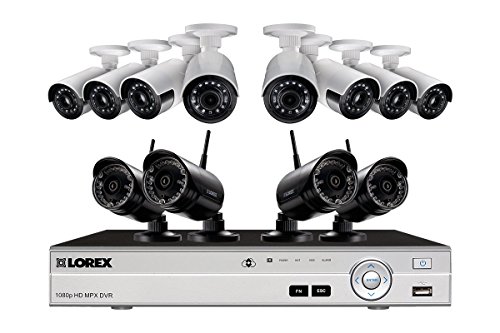 The Lorex Wireless Security Camera System does have 4 720P wireless cameras. But the remaining 12 cameras will be wired and offer full 1080P resolution. This system is a compromise between wireless and wired.
The Lorex Wireless Security Camera System does have 4 720P wireless cameras. But the remaining 12 cameras will be wired and offer full 1080P resolution. This system is a compromise between wireless and wired.
Final Thoughts about Wireless-
The technology of wireless cameras and digital cameras in general is advancing almost as fast a the medical field. True wireless cameras are now entering the market as this page is being written, and as lithium dominates the portable power world, more and more devices will take on a liberated form without the need of long strands of conductors giving us consumers simpler and better products.
Digital resolutions are also advancing at an incredible rate too. As for now, UHD 4k is about the market peak in regards to high end resolutions, but that in no way means that 720P or 1080P or 1080N is inferior. In fact, if you have never used a HD camera for security purposes, these formats are stunning and crystal clear and you won’t miss 4K for a second. So don’t worry about that so much.
Make a bulls-eye on your specific needs. If it is for a family dwelling with a fair amount of traffic in and out throughout the day, maybe motion detection should be disabled when home. A little customizing can save hard drive space. There is a certain reason wireless security camera have peeked your interest, just stay on that path and you’ll be fine.

